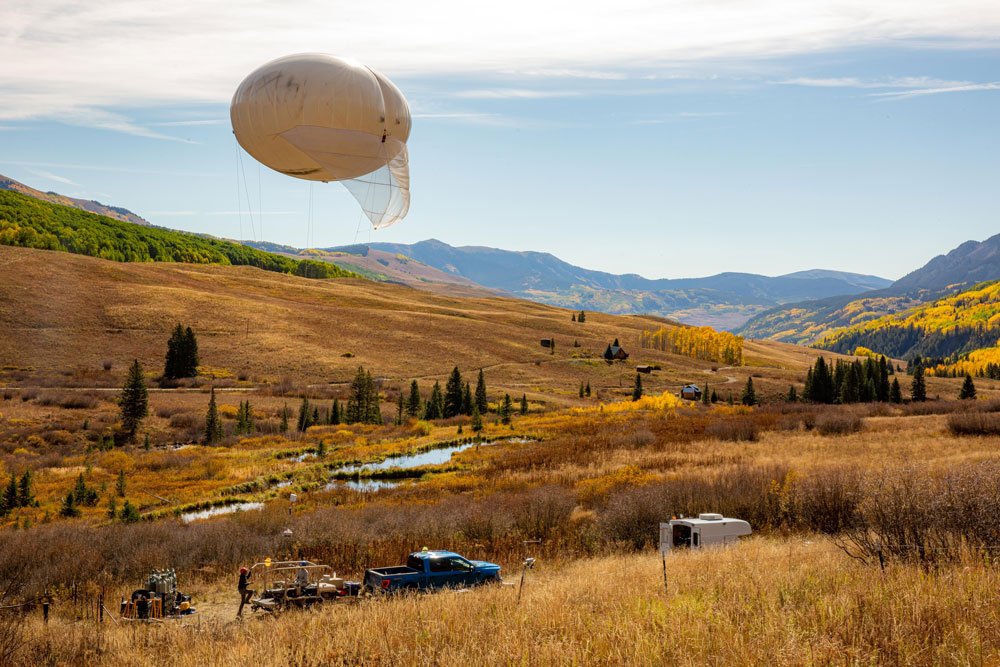Researchers Can Analyze Aerosol Samples Collected on Tethered Balloons

The Atmospheric Radiation Measurement (ARM) user facility and Environmental Molecular Sciences Laboratory (EMSL) are seeking collaborative research applications through the Facilities Integrating Collaborations for User Science (FICUS) program. The FICUS program was established in 2014 to encourage and enable ambitious research projects integrating the expertise and capabilities of multiple user facilities. ARM and EMSL are U.S. Department of Energy (DOE) Office of Science user facilities.
EMSL has developed an aerosol impactor, the automated Size- and Time-resolved Aerosol Collector (STAC), to fly as a guest instrument on ARM’s tethered balloon system (TBS). The STAC is a sampler that collects aerosol particles in the size range of 0.1-5.0µm. This instrument is able to step through a series of 20 small collection impactors during flight, providing time-resolved particle sampling.
The FICUS opportunity will enable researchers to capture aerosols during ARM TBS flights and analyze the physical, chemical, optical, and microphysical properties of aerosol particles using multimodal microscopy, spectroscopy, and advanced mass spectrometry techniques at EMSL.
The New Call at a Glance
During 2022, ARM plans to conduct TBS flights at its Southern Great Plains (SGP) atmospheric observatory in Oklahoma; in support of the Surface Atmosphere Integrated Field Laboratory (SAIL) campaign near Crested Butte, Colorado; and during the TRacking Aerosol Convection interactions ExpeRiment (TRACER) near Houston, Texas. In fiscal year 2023, ARM plans to fly the TBS at the SGP and during the SAIL campaign.
Applicants may propose to analyze samples from past TBS missions or from missions planned for 2022, or they may propose missions for the SGP or the SAIL campaign in fiscal year 2023. A standard mission involves a single tethered balloon carrying baseline ARM instruments in addition to the STAC.
Proposals for flights of non-baseline ARM instruments or guest instruments will also be considered but will need to be reviewed in consideration of payload constraints. See the ARM TBS proposal guidance and timeline of upcoming TBS flights.
To learn more about the call and to submit a Letter of Intent, go to the ARM-EMSL FICUS research web page.
A Letter of Intent is required to facilitate the planning of the peer-review process, ensure alignment of proposals to ARM and EMSL missions and capabilities, and assist users in building strong proposals. Letters of Intent are due Thursday, February 10. Get guidance for submitting your Letter of Intent.
Decisions and invitations for full proposals will be sent by Wednesday, February 23.
Read about the previous ARM-EMSL FICUS awardees.
# # #This work was supported by the U.S. Department of Energy’s Office of Science, through the Biological and Environmental Research program as part of the Atmospheric System Research program.

